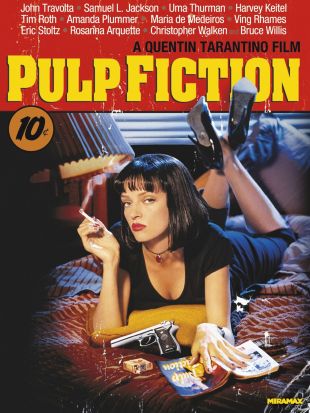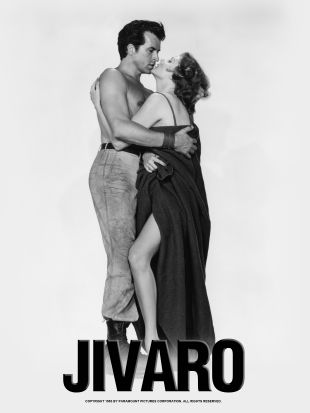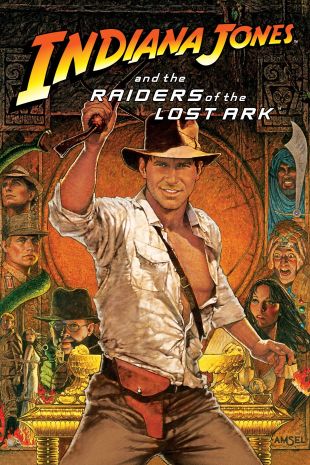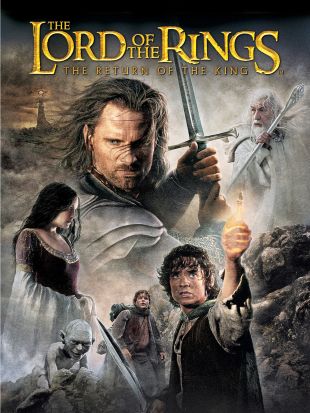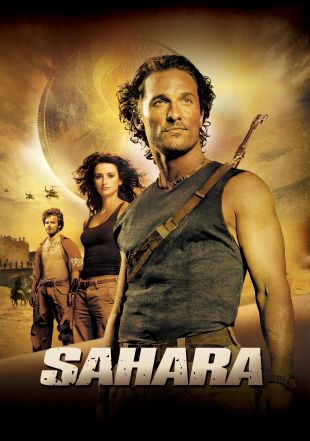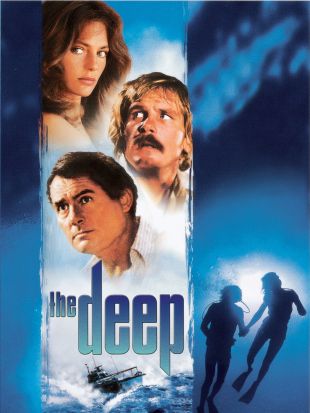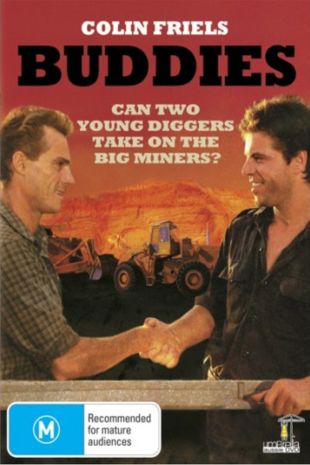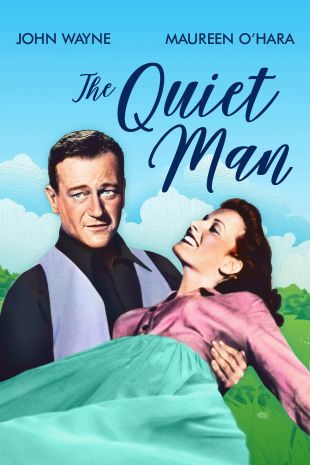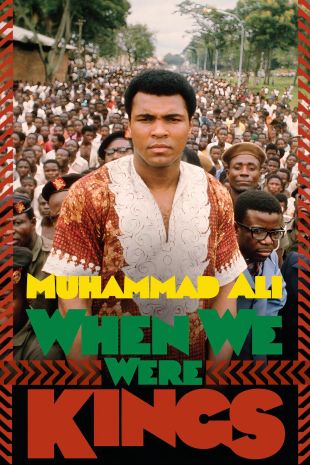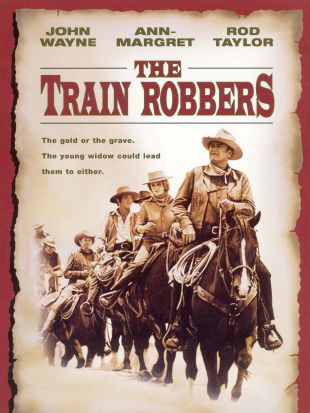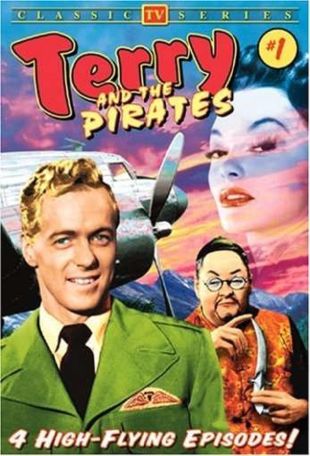
Terry and the Pirates (1953)
Share on
Synopsis by Bruce Eder
Terry And The Pirates was a short-lived television series based on the long-running comic strip created by Milton Caniff. The daily strip, starting in the 1930s, initially depicted a boy's adventures in the Orient in search of a lost gold mine, and advanced as time went on to show the young hero, Terry Lee, growing up and joining the US Army Air Force during the Second World War. The TV series picks up more or less where the comic strip was in 1946-47, in post-World War II China -- though filmed in 1953, the show was clearly set in the period between the end of the war and the takeover of the country by Mao's forces in 1949. John Baer played ex-USAAF Colonel Terry Lee, a veteran with years behind him in China, now flying cargo and passenger runs for Air Cathay, a shoestring airline operation run by the somewhat larcenous Chopstick Joe (Jack Reitzen). Terry's sidekick is his co-pilot, Charles W. Charles (aka Hotshot Charlie) (William Tracy), also ex-USAAF. The two pilots have a knack for finding trouble, whether it concerns the machinations of the nefarious Dragon Lady (Gloria Saunders) or such equally duplicitous recurring characters as Burma (andra Spence), a blonde singer-turned-adventuress with a larcenous streak.
The series did have its interesting wrinkles. Baer's portrayal of Terry Lee retained something of the wide-eyed, bushy-tailed nature of the original comic strip character, whereas Tracy's Hotshot Charlie was more of a knowing cynic, and also much more likely to get into trouble because of some foolhardiness or other, usually in pursuit of a woman. And while Chopstick Joe -- portrayed by Jack Reitzen for all but one episode (in which, according to the credits, Jack Kruschen took over the part) -- was depicted as not far from dishonest and even larcenous, the makers were careful to put him on the side of the angels at the end of the day. He might try to grab his share of a dirty business deal, but drew the line at kidnapping, doping (an amazing lapse in the censors' vigilence where drugs were concerned), and otherwise harming people in any lasting way. Similarly, the Dragon Lady, though cunning and often untrustworthy, was depicted as having some boundaries -- in one key episode, she takes offense at Terry Lee's accusation that she is involved in a blackmail and smuggling racket involving badly needed medical supplies, saying that she has no problem with running lotteries and other criminal enterprises, but would not sell people phony or diluted serum. And beautiful blond Burma, a somewhat fallen woman, was shown as trying with limited success to stay on the side of good, especially when the bad guys turn to crimes such as kidnapping and murder.
The Terry And The Pirates comic strip originated in 1934, and was ultimately one of the longest running adventure strips of the mid-twentieth century. There was a radio show, on which William Tracy (this series' Hotshot Charlie) played Terry Lee, and there had also been a movie serial in 1940 (also starring Tracy) produced by Columbia Pictures. [Though Tracy, who continued to play quasi-juvenile roles in his twenties -- a la William Benedict, Huntz Hall et al -- was right for the part of the younger, pre-World War II Terry in the serial, and had no problems voicing the character on radio, his stocky build wasn't right for what the producers were looking for in a television hero when the series went into production].
The TV series was a production of Dougfair, a company owned by Douglas Fairbanks, Jr., and produced by Don W. Sharpe, who went on to produce feature films, but Terry And The Pirates never fared as well on television as the comic strip had in newspapers. Partly, this seems to have been a matter of unfulfilled expectations -- the show's title sequence, depicting Terry and Hotshot flying into danger in a DC-3, set to a fierce and rousing musical accompaniment, promised a lot of action; and the show did deliver on some of that with stories depicting robbery, kidnappings, murder, natural disasters, and all manner of other crises. But the emaciated production, characterized by the most threadbare of sets and the one-take nature of the action, without the high-quality stuntwork to back it up, ultimately disappointed audiences. This is especially true when the series is seen in the twenty-first century -- Terry And the Pirates was one of the earlier action/adventure shows to be shot on film, going into production perhaps a year after such programs as the Adventures of Superman -- one of the true pioneers of high-quality filmed television -- and using some of the same stock music, especially in the title sequences; but where the Superman series had mostly impeccable, bracing, exhilerating stunt work (and the services of top action directors Thomas Carr and Lee Sholem), Terry And The Pirates had lesser hands at the helm, and, seemingly, a tighter and hastier shooting schedule to judge from the number of obvious first-takes and badly rehearsed moments that made it through to the public. Counter-balancing those flaws, since the 1970s, is the inherent nostalgia factor of the series -- for some people, the combination of two heroes in a post-war Chinese setting, a DC-3 in flight, and lots of greedy characters with guns, offers plenty of appeal, especially in black-and-white. The accompanying difficulty there is that, because of the series' being neglected for decades, most (if not all) of its 18 episodes are out-of-copyright and available in inexpensive public domain DVD editions; but none of these are of very high quality, as they're made from circulating 16mm prints of poor quality (the Douglas Fairbanks Jr. estate may well hold proper negatives). Another, though more minor problem, may have been the uneven tone of the series -- it offered plots involving violence and intrigue, yet was clearly aimed at younger viewers, which is a difficult line to tread (as the producers of the Superman series found out quickly, eliminating most of the violence and ominous elements from the production); and even in the relatively innocent days of 1953, any adults watching were likely put off, in an odd way, by the manner in which Baer, Tracy, and Reitzen finished each episode by stepping out of character, facing the camera, and inviting the viewer to tune in the following week to Terry And The Pirates.
Characteristics
Themes
Keywords
boxing, disease, gold-mine, lost, sports
